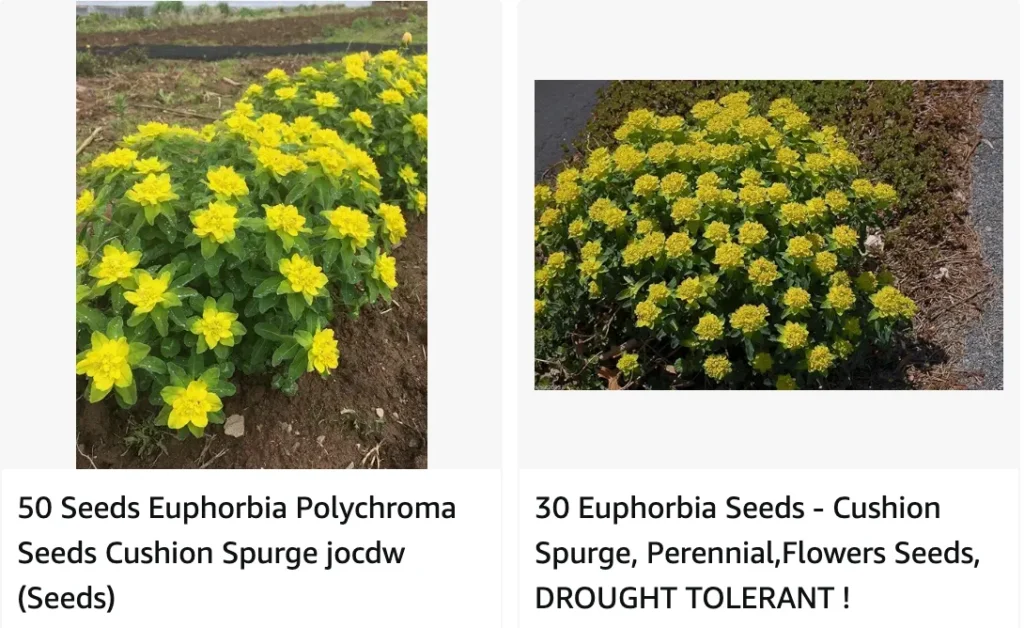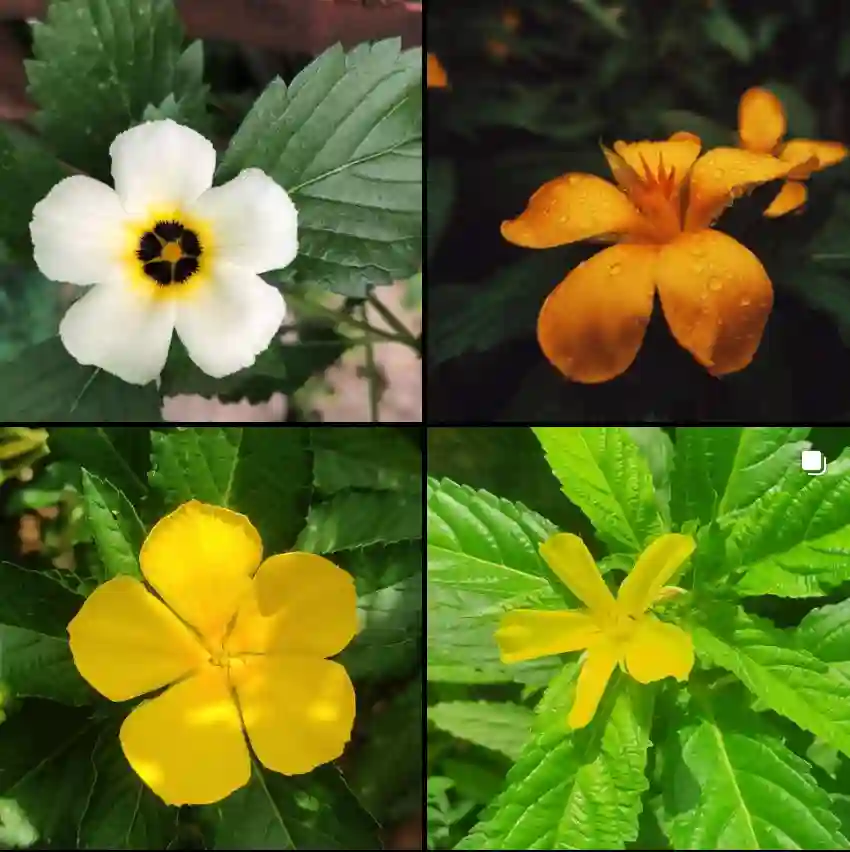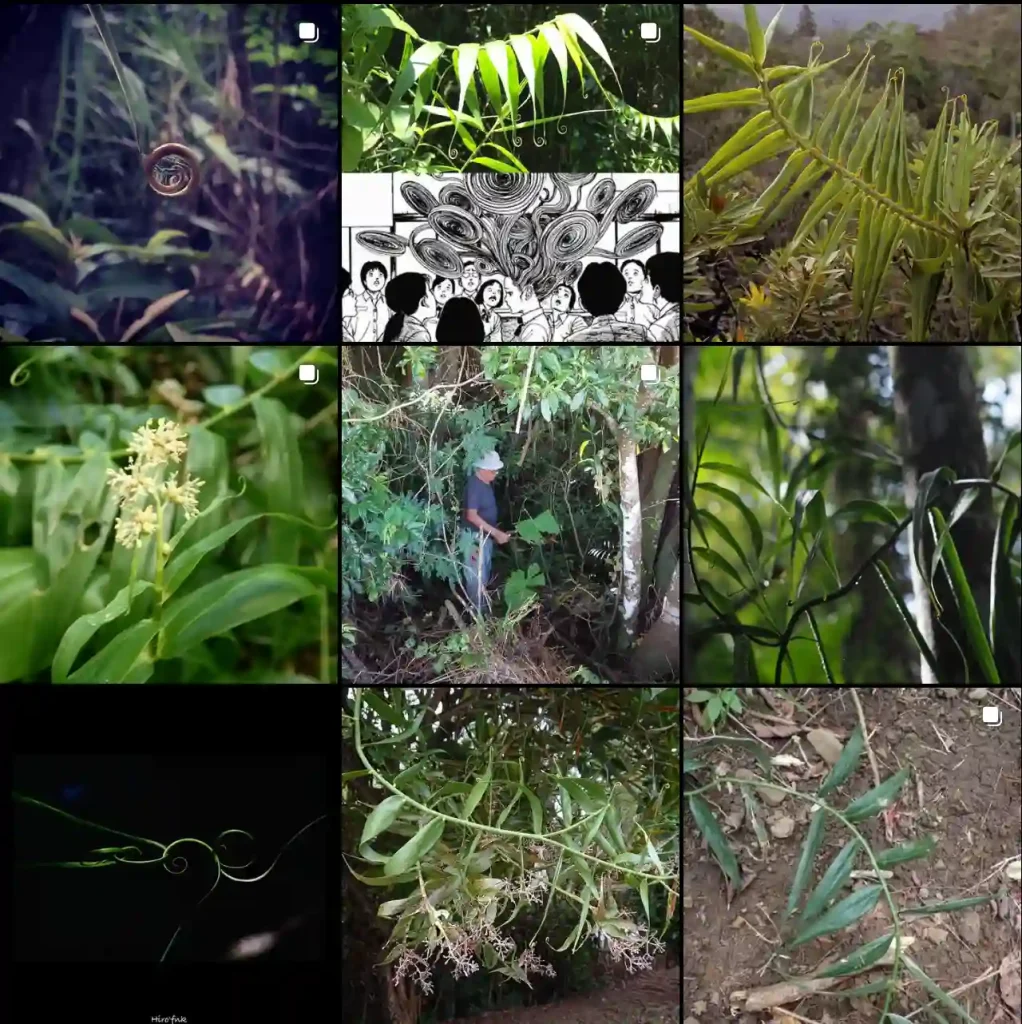
What is Euphorbia Polychroma?
For years, I’d been on the hunt for a low-maintenance perennial that offered both stunning visuals and a long bloom time. Enter Euphorbia polychroma, also known as Cushion Spurge. This architectural wonder has become a mainstay in my garden, offering a unique charm that transcends the seasons.
Euphorbia polychroma isn’t your average flowering plant. It forms a mesmerizing, dome-shaped mound with attractive foliage that transforms throughout the year. In spring, the star of the show is the dense clusters of tiny, chartreuse flowers surrounded by bright yellow bracts. As summer arrives, the bracts morph into a fiery chrome yellow, adding a pop of color to the sunny borders. But the magic doesn’t stop there. Come fall, the foliage explodes in a vibrant crimson, adding a touch of drama to the changing landscape.
2093 Species in Genus Euphorbia
How to plant and care for Euphorbia Polychroma?
Euphorbia polychroma is a dream for gardeners like myself who appreciate low-maintenance plants. It thrives in full sun and well-drained soil. In fact, it tolerates drought conditions quite well, making it a perfect choice for those hot, dry summer months. Here are some key things to remember when planting and caring for your Euphorbia polychroma:
- Planting: Choose a location that receives at least 6-8 hours of direct sunlight daily. Amend your soil if necessary to ensure good drainage. Dig a hole slightly larger than the plant’s root ball and gently place it in the hole. Backfill the hole and water thoroughly.
- Watering: Euphorbia polychroma is drought-tolerant once established. Water deeply during the first growing season, but allow the soil to dry slightly between waterings thereafter.
- Feeding: Fertilizing isn’t necessary for Euphorbia polychroma. In fact, too much fertilizer can encourage leggy growth.
Propagation: Sharing the Euphorbia Love
Euphorbia polychroma can be easily propagated through division in spring or early fall. Here’s how:
- Carefully dig up the mature Euphorbia polychroma plant using a sharp spade.
- Using a clean, sharp knife, divide the plant into sections, ensuring each section has healthy roots and foliage.
- Replant the divisions in prepared holes, water them well, and keep the soil moist until they establish themselves.
Pruning for Shape and Beauty
Euphorbia polychroma requires minimal pruning. However, you can lightly prune the plant in late winter or early spring to remove any dead or damaged stems. This will also encourage bushier growth.
Ground Cover or Standalone Star?
While Euphorbia polychroma can technically be used as a ground cover, its mounding form is better suited as a standalone specimen plant in borders or rock gardens. Its architectural presence and seasonal color changes make it a true conversation starter.
Fiery Fall Foliage: The Case of Euphorbia polychroma ‘Bonfire’
The Euphorbia polychroma ‘Bonfire’ cultivar lives up to its name. This variety boasts even more intense fall foliage, with the bracts turning a fiery orange-red instead of the standard crimson.
Cutting Back for a Fresh Start
While Euphorbia polychroma doesn’t require heavy pruning, you can cut back the entire plant in late winter or early spring to remove dead foliage and encourage new growth. However, this isn’t necessary for the plant’s health and may delay flowering.
A Word of Caution: Beware the Sap
Euphorbia polychroma, like all Euphorbias, contains a milky white sap that can be irritating to the skin and eyes. Wear gloves when handling the plant and be sure to wash your hands thoroughly afterward.
Euphorbia polychroma is a true gem for any garden. Its low-maintenance nature, stunning visuals, and long bloom time make it a winner in my book. So, if you’re looking for a plant that adds pizzazz to your borders and requires minimal fuss, then Euphorbia polychroma might just be your perfect match.
If i die, water my plants!



